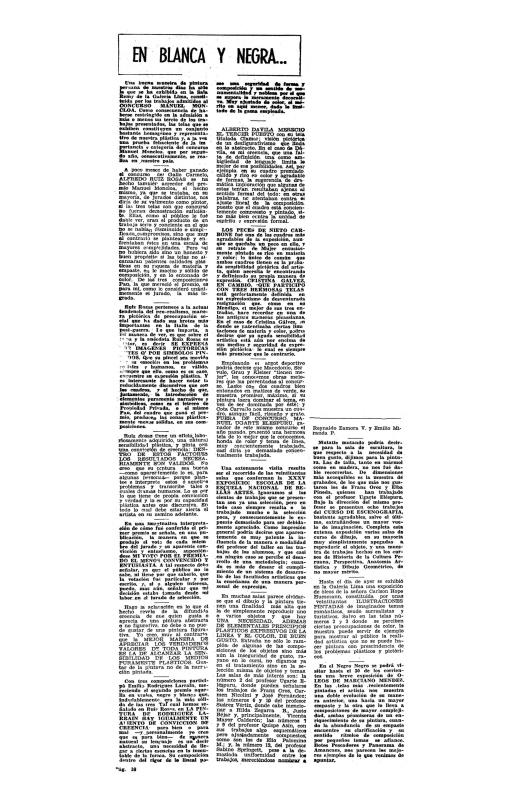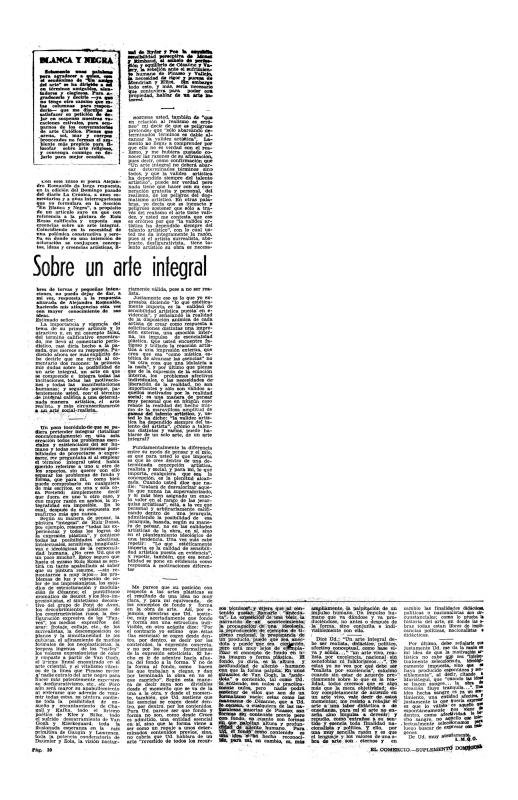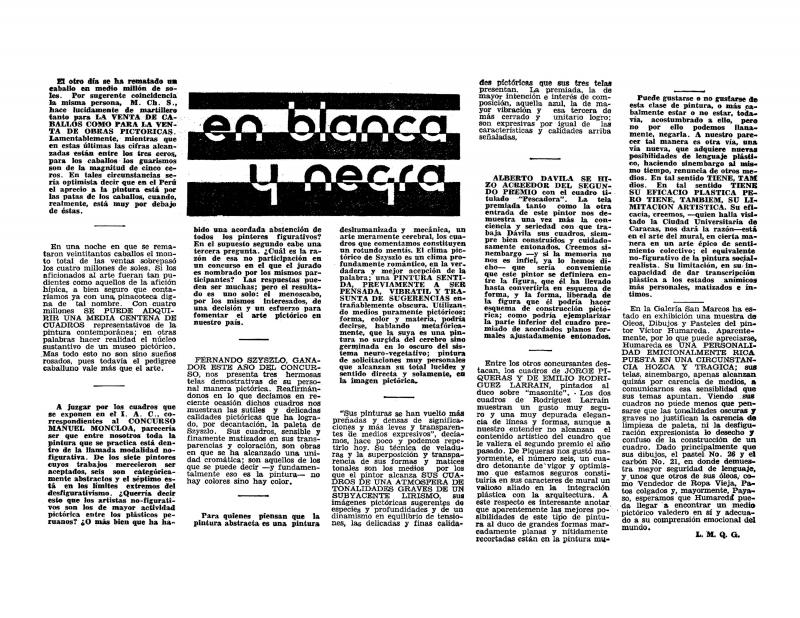In this text by Alejandro Romualdo Valle, two concepts call our attention. In the first, in a turn of phrase that may be linked to his Marxist affiliation, he states his objection to Garland’s “turning art into a triumph of aesthetic racism.” The second, more important comment emphasizes the exceptional nature of art, in all forms—“our best freedom of expression.” This is a veiled reference to the repressive measures of the governing dictatorship (1948–56) led by General Manuel Apolinario Odría. With this statement, using an expression of the time, he agrees to “peaceful coexistence between realistic and abstract art.” In January 1955, the canvas Pan by Alfredo Ruiz Rosas (1926–2002) won the first prize at the Second Salón de Pintura Manuel Moncloa (Lima). [In the ICAA digital archive, see the article by Manuel Jesús Orbegozo, “Un “pan” común de todos los días, amasado por Alfredo Ruiz Rosas, ganó diez mil soles” (doc. No. 859785)]. Awarding the prize to the main representative of social realism in Peru had major repercussions in an art milieu polarized by the debate about Abstract art. Those who opposed nonfigurative art saw a model for contemporary painting in his work, even though it was tied to “reality” and to the general viewing public. For the journalist inspired by Marxism, Alejandro Romualdo Valle (1926–2008), Ruiz’s painting represented “integral art,” combining visual-art experimentation with human commitment. Thus, the winning artwork was a far cry from abstract, aestheticist “specialization” [see “Ruiz Rosas y un arte integral,” by Alejandro Romualdo (doc. No. 1227027)]. This reading led to an extended debate with the Modernist art critic and architect Luis Miró Quesada Garland (1914–94), who—as a member of the jury at the Second Salón Moncloa—supported the prize winner for strictly artistic reasons [by Garland, “En blanca y negra...” (January 16, 1955) (doc. No. 859805) and by Alejandro Romualdo, “Sobre un arte integral” (February 27, 1955) (doc. No. 1227195">1227195)]. The resulting debate revealed the intensity of the intellectual and political tensions unleashed by the eruption of nonfigurative art in Peru [see the following articles: by Garland, “En blanca y negra...” (doc. No. 859826), “Sobre un arte integral” (doc. No. 859917) and “Sobre un arte integral” (doc. No. 1227195">1227195); and by Alejandro Romualdo, “Sobre un arte integral (respuesta al arquitecto Luis Miró Quesada G.)” (doc. No. 1227139) This exchange of opposing opinions can be compared with a debate about a year later when the first prize at the third round of the same competition was awarded to an abstract work by Fernando de Szyszlo (b. 1925) [see the articles: by Sebastián Salazar Bondy, “Artes Plásticas” (doc. No. 859662); by Garland, “En blanca y negra” (doc. No. 859754), and one more in his regular column “En blanca y negra…” (doc. No. 1137283); by Szyszlo, “Cartas al Director” (doc. No. 1227064); by Alejandro Romualdo, “Cuidado con la pintura: el arte por el arte abstracto —comentario al premio ‘Manuel Moncloa y Ordóñez’” (doc. No. 1227101); by Manuel Jesús Orbegozo, “Entrevista concreta a un pintor abstracto” (doc. No. 1227120); “La pintura abstracta: proceso de subjetivación —Szyszlo trata de explicar lo que pocos entienden” (unsigned) (doc. No. 1227046); and by Juan Manuel Ugarte Eléspuru, “12 meses de artes plásticas en Lima” (doc. No. 1137301)].















